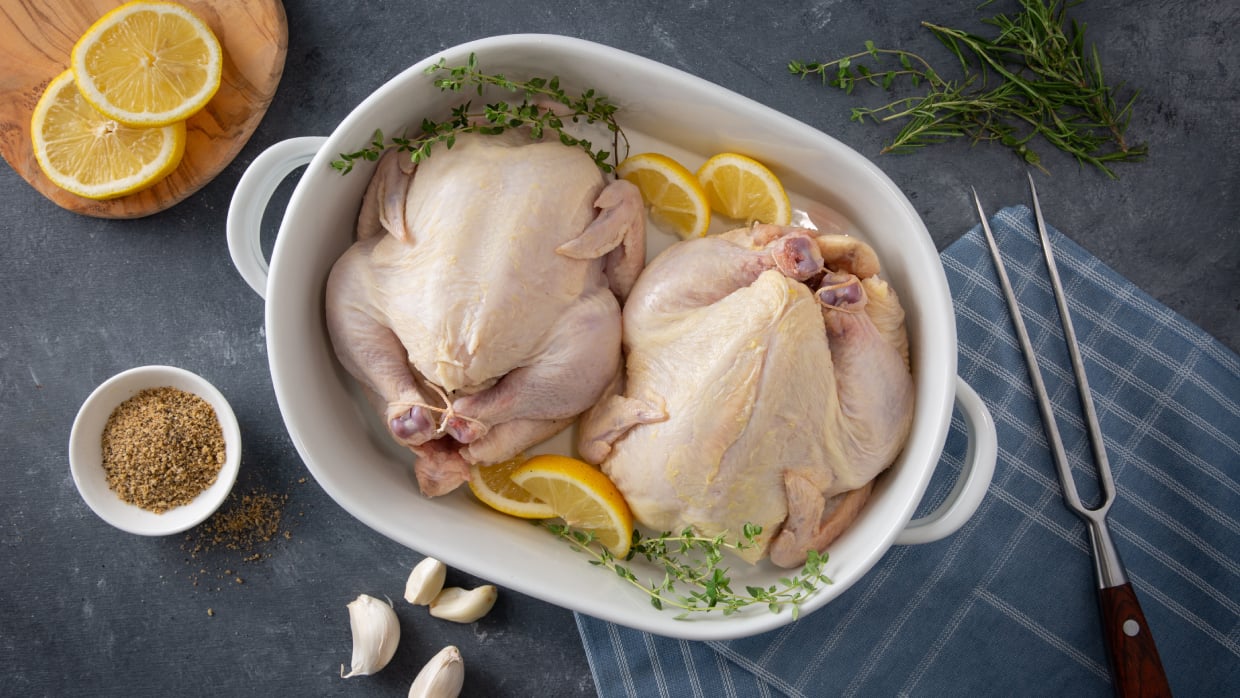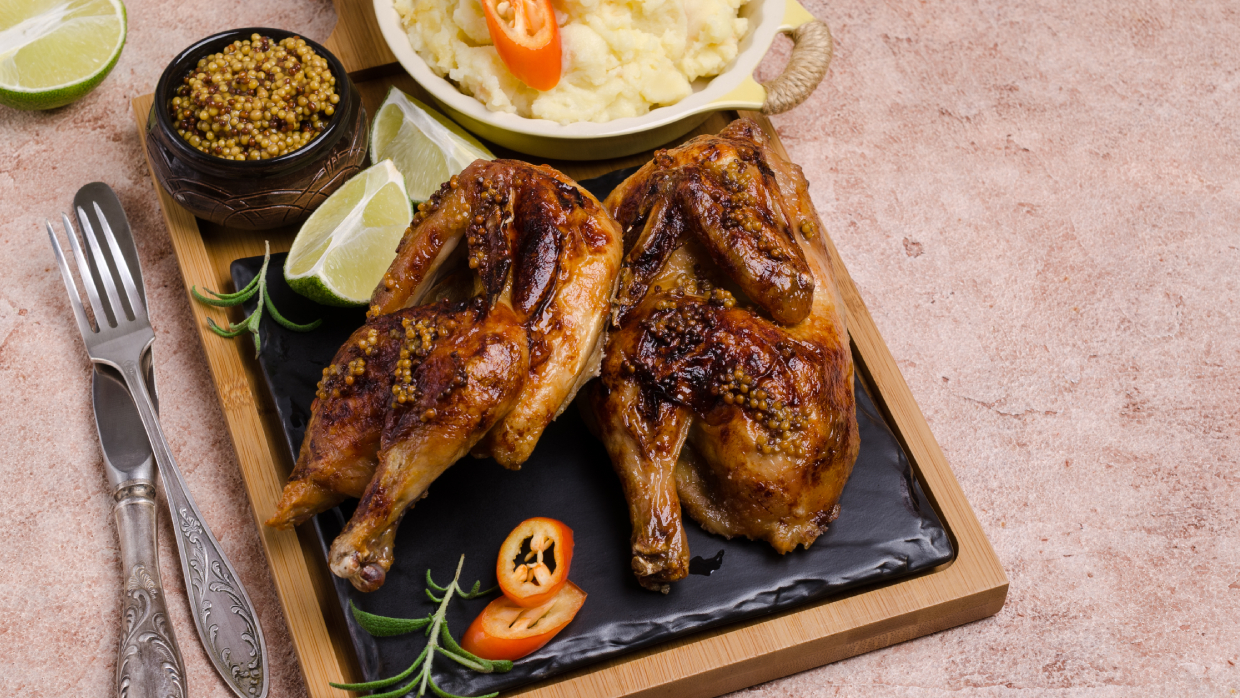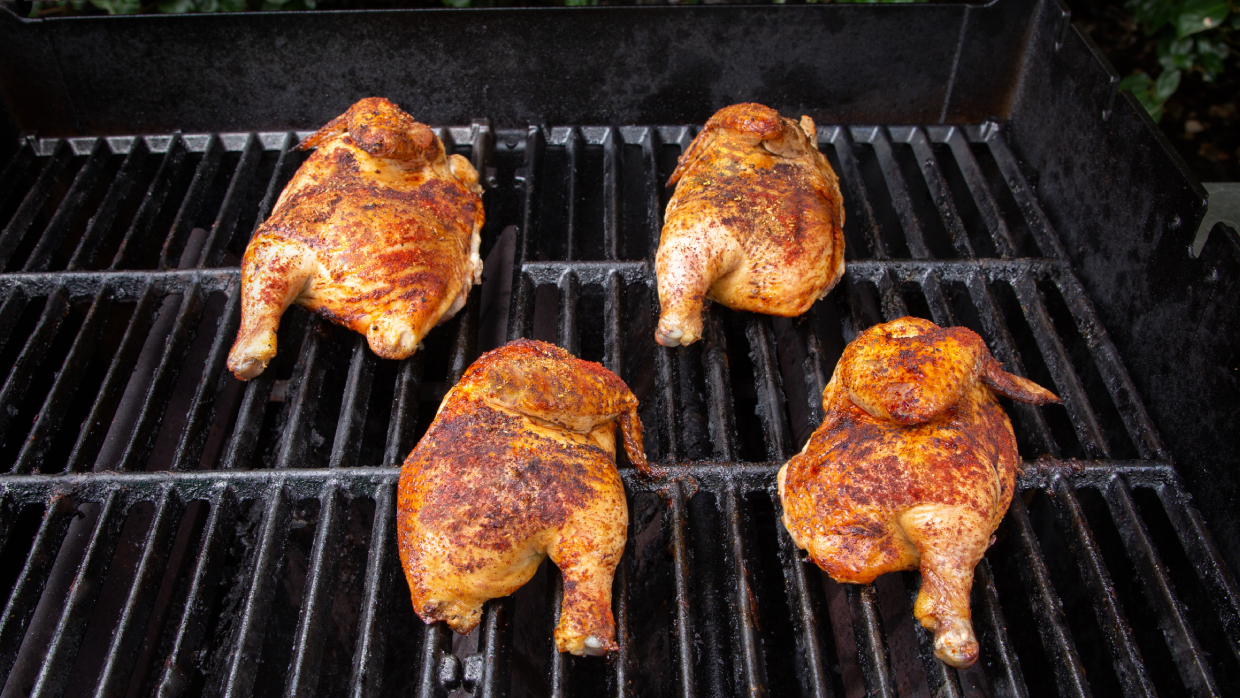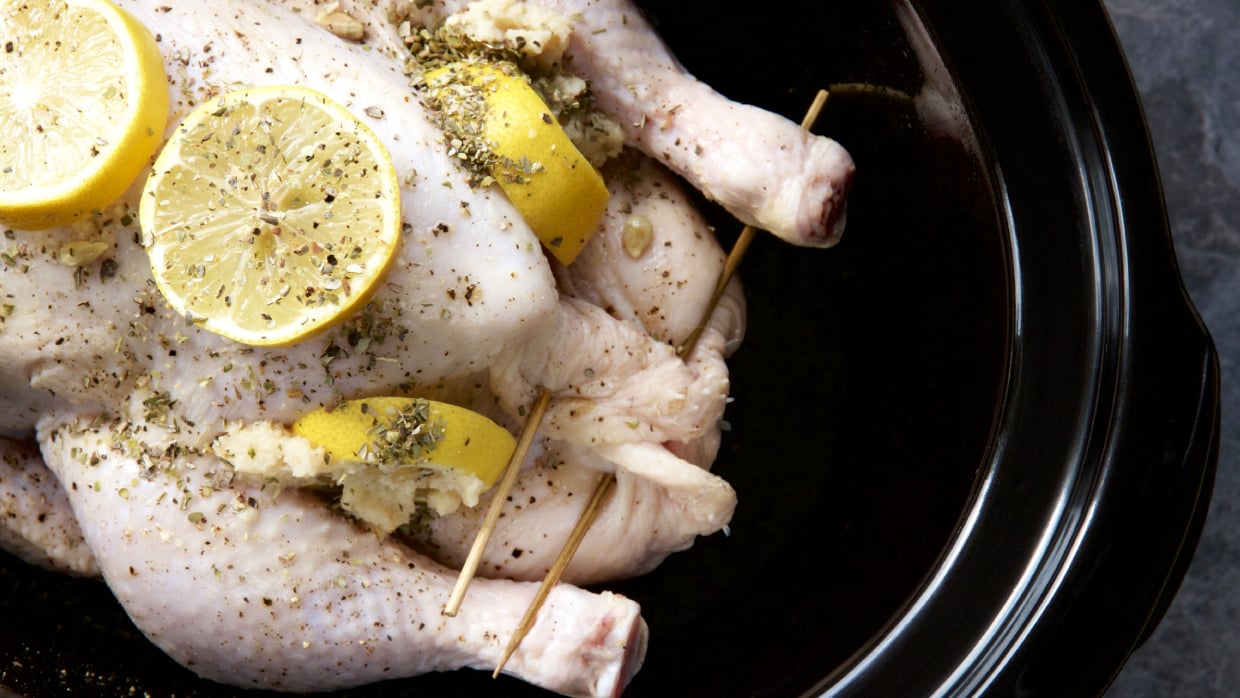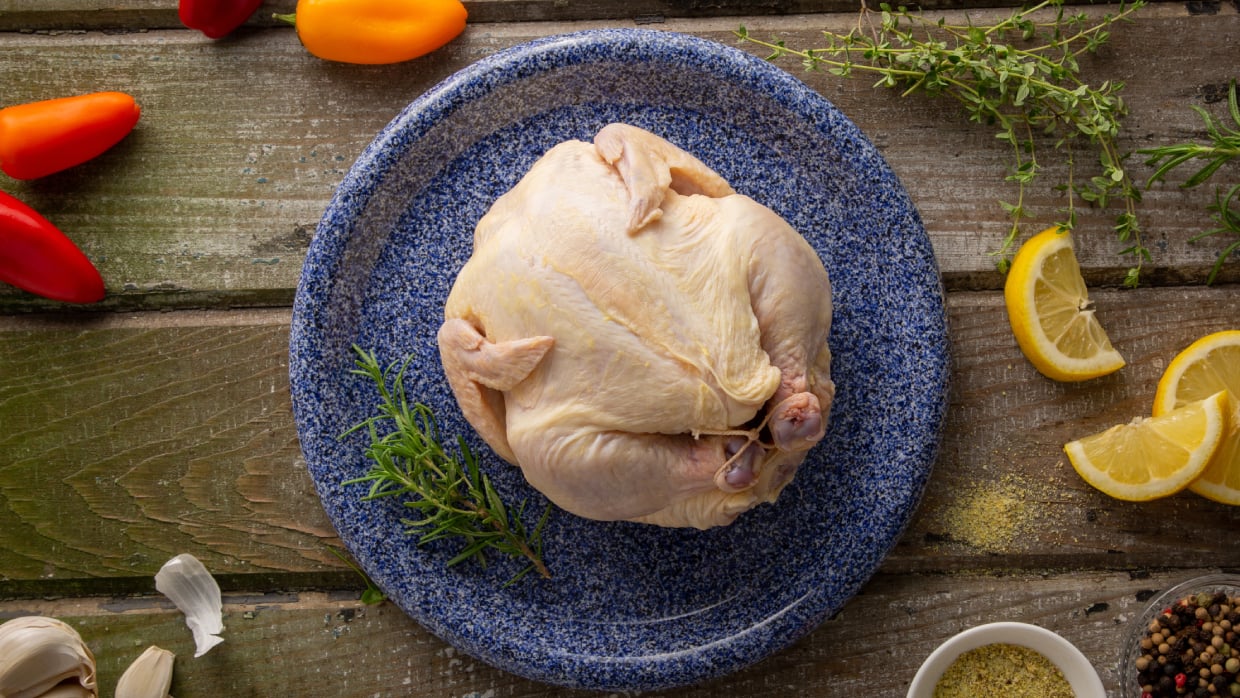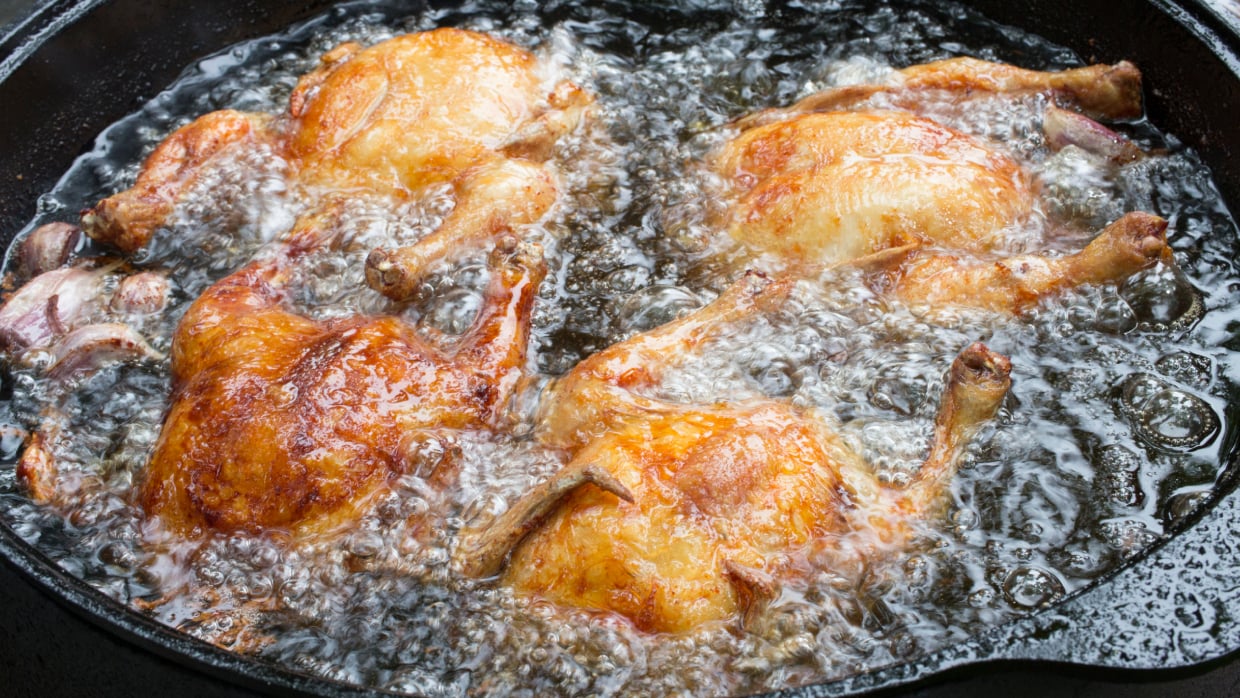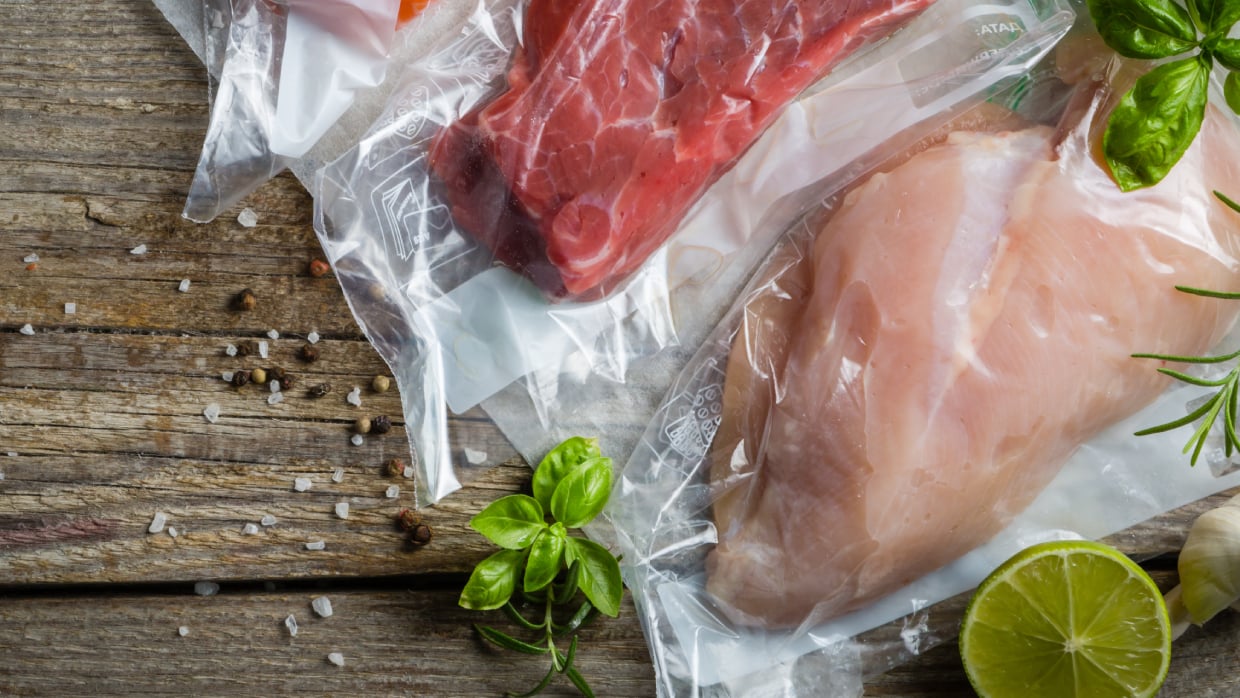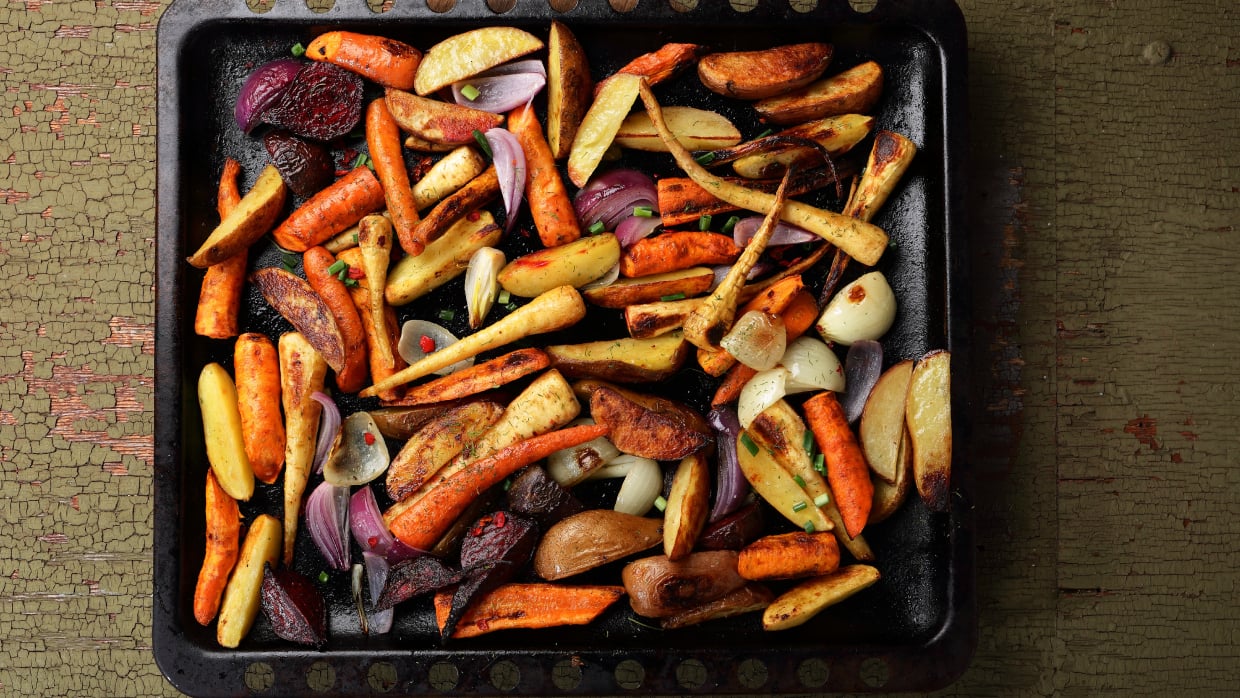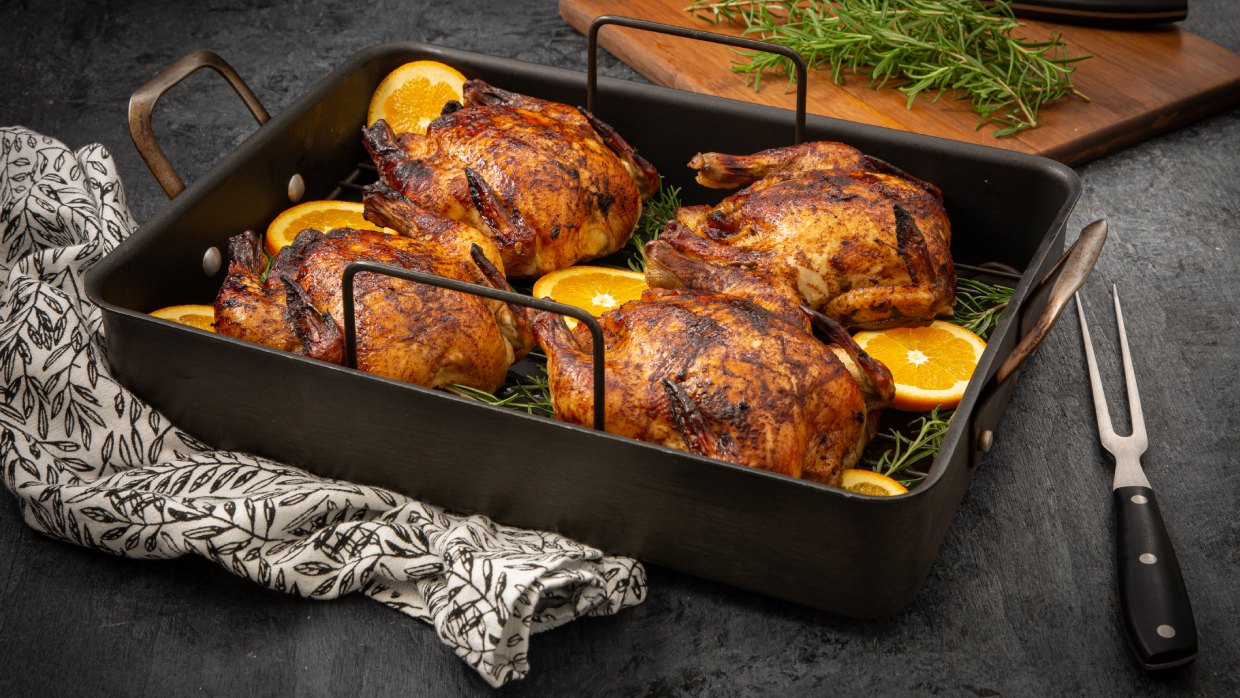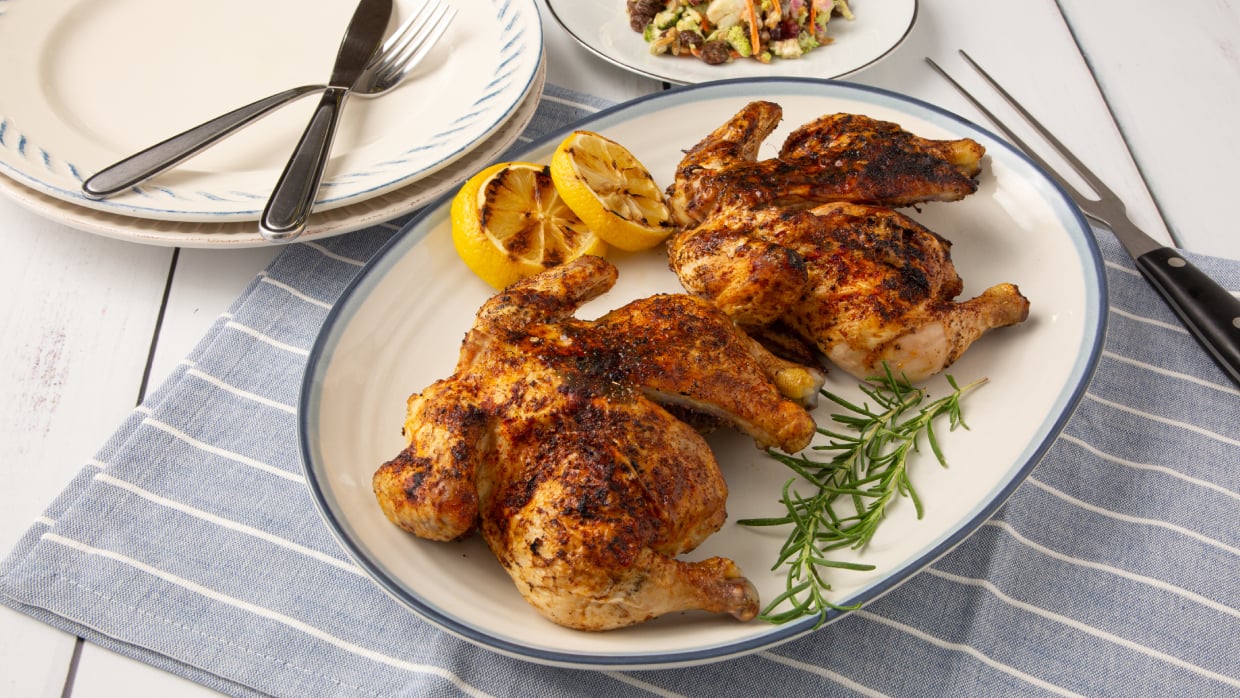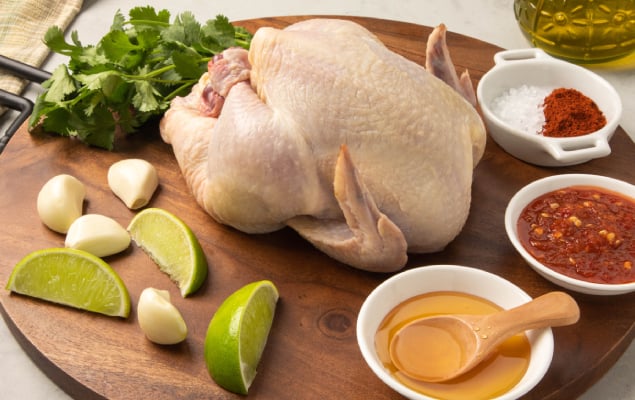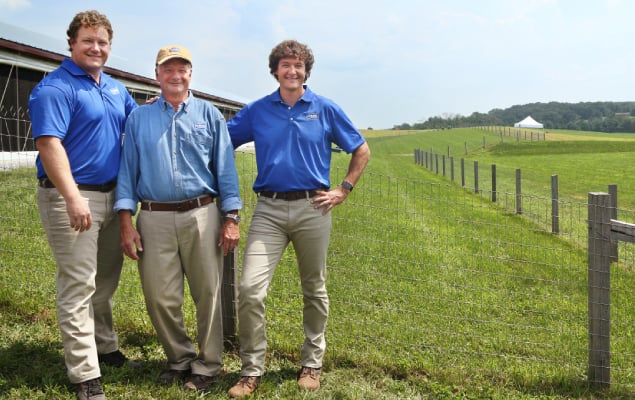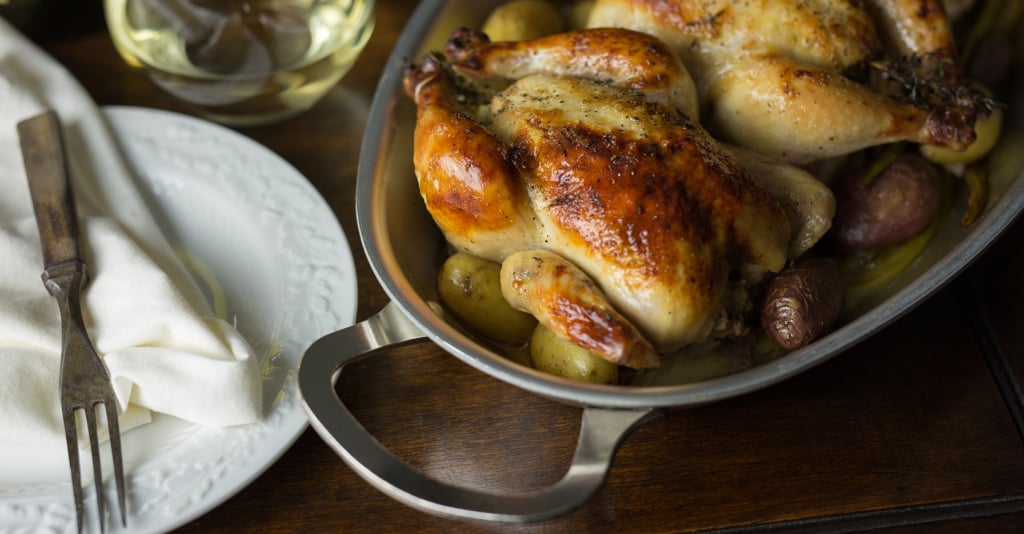
HOW TO COOK CORNISH HENS
An elegant main course that is deceptively easy to cook, Cornish hens are perfectly portioned to feed one person per bird. Tender and juicy, with little seasoning required, birds can be roasted in the oven, grilled, braise in a slow cooker, deep fried, smoked or cooked sous vide. There’s really no wrong way to make a delicious dinner with these pint-sized birds. Here, Perdue Farms’ Executive Chef Chris Moyer, CEC,CRC, shares Cornish hens recipes, roasting ideas and more.
Properly sealed in air-tight packaging, frozen birds may be stored in the freezer for 7 or 10 months.
- Refrigerator Defrosting: To thaw, place frozen bird in the refrigerator and let set for at least 24 hours. Once thawed, cook within a day or two.
- Quick-Thaw Defrosting: Submerge frozen bird in a bowl of cool water. Refresh water every 30 minutes. Ensure that the package is not ripped or torn, as water that seeps into the package may affect cooking time or introduce bacteria. Soak bird for 1 to 1 1/2 hours (or 30 minutes per pound). Once thawed, cook immediately.
Do not rinse the skin or cavity of the bird, as doing so may spread bacteria in the sink and on the countertop.
Once defrosted, remove bird from packaging and pat dry with a paper towel. Remove giblet bag from cavity and reserve for making sauces, etc.
Heavily brining or marinating product is unnecessary as Cornish birds are small and meat is quite succulent.
Source: “The Big Thaw — Safe Defrosting Methods for Consumers,” USDA.Step One: Preheat oven to 425 F.
Step Two: Rub skin inside and out with room-temperature butter or olive oil, your favorite seasoning and/or garlic. Stuff the cavity with slices of citrus fruit, herbs and garlic. Sprinkle Kosher salt and large-crack black pepper and chopped rosemary or thyme over bird.
Step Three: To roast, place birds on rack in a roasting pan or atop a “natural” rack of seasonal root vegetables and small potatoes in a pan. Place in oven and roast for 45 minutes or until meat tested with a digital meat thermometer registers 180 F.
- Tips:
- To prevent loss of moisture, let chicken rest for 5 to 8 minutes before carving.
- To maintain a crispy, crunchy skin, do not tent bird with foil after removal from oven.
Step One: Turn one area of grill on medium heat and another area on low (or do not heat) to create two separate (direct and indirect) heat zones. Close the lid and preheat until the grill registers 350 to 375 F.
Step Two: Butterfly chicken, following directions in this recipe. After oiling/buttering and seasoning birds, place chicken, bone side down, on the indirect heat area of grill and close the lid. Monitor temperature of chicken with a meat thermometer, and when chicken is 80 percent cooked through, turn the direct-heat section of the grill to high. When grill thermometer registers 425 F, move chicken from the indirect to the direct heat area of the grill, placed skin side down. Grill lid should be open. Let cook until skin is crisp and browned. Check doneness (180 F) with a meat thermometer.
Step Three: If glazing birds with BBQ or other sauce, turn the grill on high heat. Close the lid and preheat until the grill registers 425 to 450 F. Place chicken, skin side down, in the direct heat area of grill and cook to crisp the skin and brown the bird. Flip over, reduce grill temperature to 350 to 375 F, glaze birds with sauce and move to indirect heat section of grill. With the lid closed, continue to cook for approximately 45 minutes, then check doneness (180 F) with a meat thermometer.
To braise chicken in a slow cooker:
Step One: Split birds in half and place in a sauté pan over medium-high heat, skin side down. Cook until skin is browned (about 5 minutes). Remove from pan and place in the slow cooker.
Step Two: Place diced onion, celery and carrots (“mirepoix”) in the same sauté pan and cook until brown (about 5 minutes). Add chopped garlic and (for acidity) a tablespoon of tomato paste or tomato sauce. Once bottom of pan is brown, remove vegetables from pan and place in the slow cooker.
Step Three: Deglaze pan by adding a small amount of white wine and stirring over medium heat until brown residue (“fond”) lifts from pan. Pour liquid over chicken and vegetables in the slow cooker. Add enough chicken stock to submerge the bottom half of chicken. Place lid on cooker and cook on low for 6 to 7 hours.
Step Four: When done, remove chicken from cooker. Place liquid and vegetables in a food processor and pulse until liquified. Pour sauce in pan and warm over low heat on stovetop. Add cornstarch to thicken, if necessary.
Step Five: Place chicken under broiler for a few minutes to crisp the skin. Pour sauce over chicken and serve with your favorite sides.
Cornish hen is best when butterflied before being smoked. See here for directions.
Step One: When seasoning the chicken, take into consideration the wood you will use in the smoker. Applewood, mesquite and hickory have unique flavor profiles. Applewood (and most fruit woods) produces a mild smoke, which pairs well with a blend of citrus and cracked black pepper. Mesquite and hickory, which produce a more intense smoke flavor, work well with herb-based seasonings or sweeter brown sugar- or maple syrup-based profiles. Be careful not to over-season, which could overpower the smoky flavor.
Step Two:Size of wood comes down to preference. Larger pieces are better for a longer burn. Small pieces are best when bursts of smoke are desired. There’s no right or wrong when it comes to soaking wood either. When soaked, wood burns longer and steams rather than burns, which produces a flavor unlike that of dry wood.
Step Three: Things to avoid: lighter fluid-soaked, compressed briquettes and lighter fluid, both of which imbue food with an “off” flavor. Choose natural wood charcoal with no additives and start coals in a chimney coal starter.
Step Four: Preheat smoker to 225 to 250 F. Add small wood logs or chunks to smoker, then place chicken, bone side down, on the grates. Be sure to use a drip pan to collect grease. Close lid. Cook for 1 to 2 hours, or until meat thermometer registers 180 F.
Serving suggestion: Pull meat off the bone and shred. Serve with BBQ (or your favorite) sauce.
Step One: Preheat deep fryer to 350 F. If bird browns too quickly, lower temperature slightly, but no lower than 325 F. Cut chicken in half, lengthwise.
Step Two: Drying the skin is the key to perfectly fried Cornish chicken. At a minimum and for the crispiest skin, dust hens with flour or corn starch before placing chicken in the deep fryer. To bread, dip birds in flour, then an egg wash and finally in Panko bread crumbs.
Step Three: Be sure to season sufficiently, as some herbs and spices will flash off during the frying process. Add seasoning to flour and egg wash. Also consider seasoning after frying, by sprinkling BBQ rub or hickory seasoning over birds.
Step Four: Keep tongs close by, as birds cook faster in a deep fryer than in the oven. If chicken has been broken down into parts, frying should take no longer than 12 to 15 minutes. Check for doneness (180 F) with a meat thermometer.
Cooking chicken in a water bath has its advantages, namely moisture retention, increased tenderness and shelf life — sealed meat will remain fresh in the refrigerator for two to three weeks.
Step One: Split raw chicken in half, lengthwise, and place pieces, along with garlic, herbs and other seasonings, in a cryovac bag. Draw a vacuum and seal the bag. Note: Chicken can be prepared the night before and stored in the refrigerator.
Step Two: Place pouch in a water bath set at a consistent temperature of 160 F. After a minimum of three hours, remove bag from warm water and place in an ice bath. Bring temperature of product down as rapidly as possible and then refrigerate. Note: Pouch can remain in water bath for an extended period of time (6 to 7 hours) without overcooking.
To heat and serve:
- Direct from water bath: Remove pouch from water, open pouch, remove chicken and place chicken in a high-heat oven (425 to 450 F) or oven with convection setting turned on to crisp the skin, about 5 to 6 minutes.
- If chilled: Remove pouch from refrigerator, open pouch, remove chicken and place chicken in a high-heat oven (425 to 450 F) or oven with convection setting turned on for 12 to 15 minutes or until internal temperature of chicken reaches 150 F.
Choose sides and sauces that let the delicate flavor of Cornish chicken shine. Consider a simple gravy or sauce, along with roasted vegetables (potatoes, carrots, parsnips, turnips, etc.) or a big helping of mashed potatoes.
Here are suggestions from Frank Perdue’s classic Cornish Hens cookbook:
- Roasted: Rice Pilaf and Asparagus
- Spicy, Fried: Glazed Sweet Potatoes, Cherry Tomato and Melon Ball Salad
- Breaded, Deep-Fried: Black-Eyed Peas, Corn Bread
- BBQ-Braised: Fried Onion Rings, Corn on the Cob
Farmers at Perdue Farms raise what is called a Cornish Cross, a hybrid of a Cornish sire, a breed imported from England in 1887, and a White Plymouth Rock chicken, a popular commercial breed introduced in the U.S. in the late 19th century. Breeding and crossbreeding generations of birds has resulted in a chicken that features a broader, meatier breast and produces more tender meat than either the Cornish or the White Plymouth Rock.
Cornish Crosses are harvested when young (only four to six weeks old) and weigh approximately 1 to 2 pounds. In the past, farmers would have referred to these chickens as “poussins” or “spring chickens.”
Interesting fact: Perdue Farms’ Cornish birds are raised by experienced Perdue farmers on small U.S. farms that feature only one to two houses. Farming on such a small scale allows farmers to spend more time with the birds. These farmers specialize in brooding (caring for chicks during the first few crucial weeks of life).
Perdue’s Cornish chicken was bred to produce a more plump and tender bird. And also a chicken that is the perfect size: One Cornish equals one natural portion. Here are more reasons why we think the product is so exceptional:
- Meat boasts delicate flavor and melt-in-your-mouth texture.
- Meat is fall-off-the-bone tender.
- Skin, thinner and with less fat content than that of a full-size roaster, crisps up easily and offers superior crunch.
- Bird cooks up more quickly than a full-size roaster.
Perdue Cornish birds are naturally low in calories and cholesterol and high in protein. To reduce calories when you cook, avoid use of butter, oil and cream and, instead, flavor birds with chicken broth, herbs, garlic, slices of citrus fruit and dry wine or sherry.
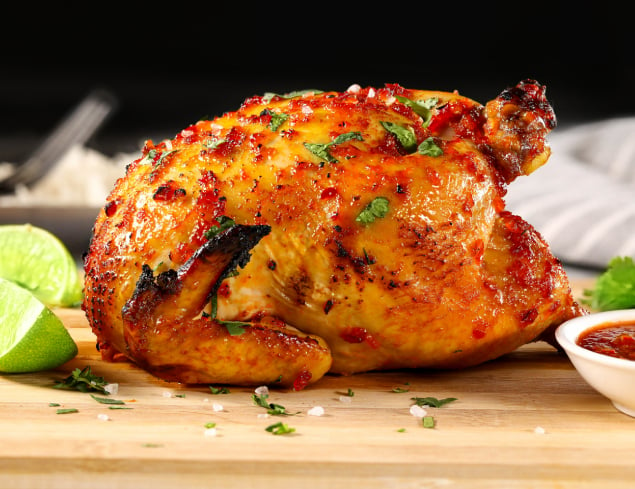
Delicious Cornish Hens Recipes
Hungry for more? Check out these Cornish game hen recipes from the Perdue family and our culinary team
Better Chicken for Family Meals
Chicken from Perdue Farms' family of American farmers is raised to a higher standard: no antibiotics, hormones or steroids ever and plenty of access to sunlight and the great outdoors. We believe BETTER farming translates to better-tasting meat. But don't take our word for it! Stock up on premium chicken for family meals — we deliver to your doorstep!
Why Choose Perdue Farms
When it comes to the food you feed your family, quality matters. And while there are a lot of options out there, Perdue Farms stands apart. In business for over 100 years, we are a fourth-generation, family owned American food and agriculture business that from the beginning has worked with family farmers.
